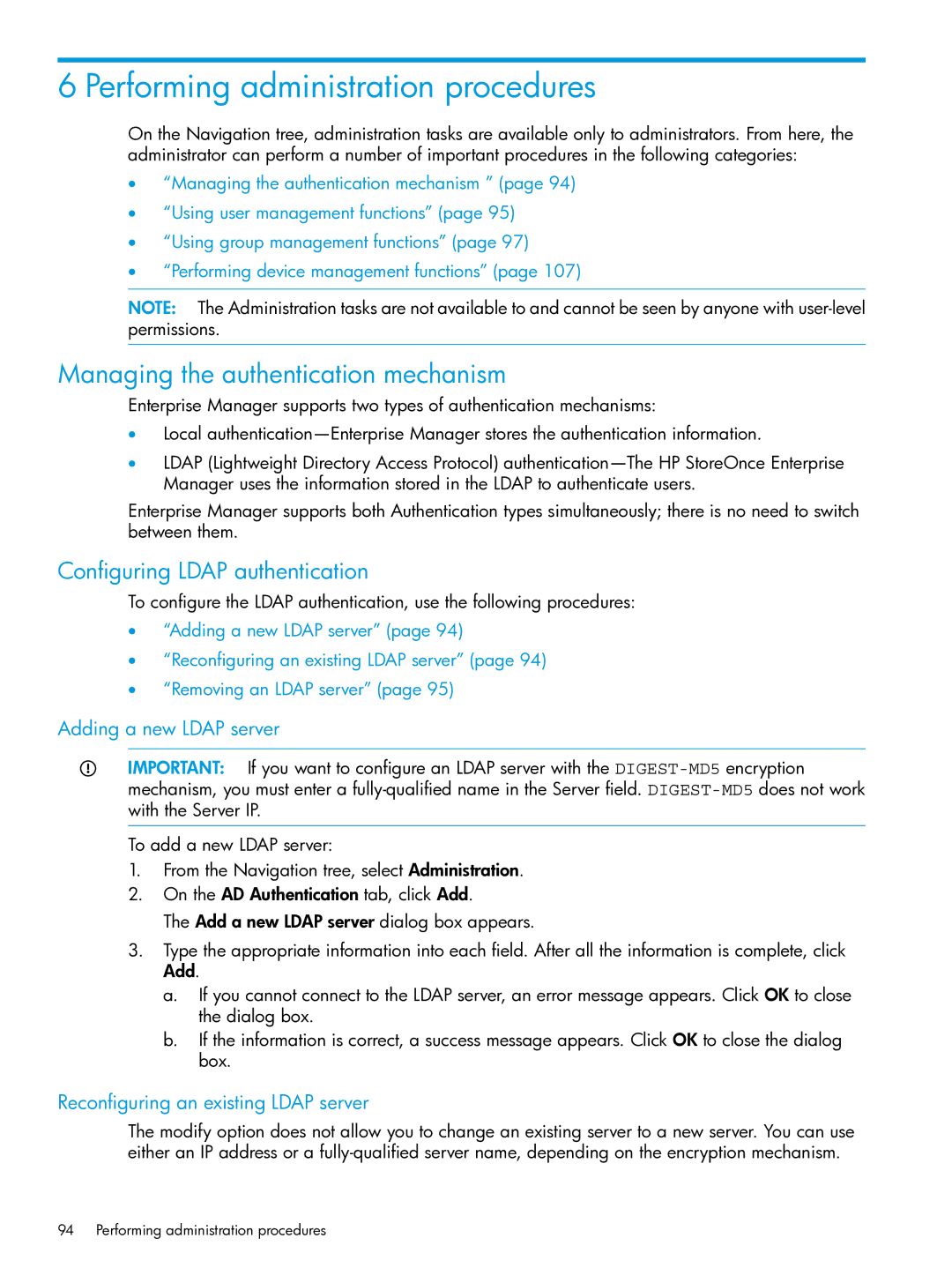
6 Performing administration procedures
On the Navigation tree, administration tasks are available only to administrators. From here, the administrator can perform a number of important procedures in the following categories:
•“Managing the authentication mechanism ” (page 94)
•“Using user management functions” (page 95)
•“Using group management functions” (page 97)
•“Performing device management functions” (page 107)
NOTE: The Administration tasks are not available to and cannot be seen by anyone with
Managing the authentication mechanism
Enterprise Manager supports two types of authentication mechanisms:
•Local
•LDAP (Lightweight Directory Access Protocol)
Enterprise Manager supports both Authentication types simultaneously; there is no need to switch between them.
Configuring LDAP authentication
To configure the LDAP authentication, use the following procedures:
•“Adding a new LDAP server” (page 94)
•“Reconfiguring an existing LDAP server” (page 94)
•“Removing an LDAP server” (page 95)
Adding a new LDAP server
IMPORTANT: If you want to configure an LDAP server with the
To add a new LDAP server:
1.From the Navigation tree, select Administration.
2.On the AD Authentication tab, click Add.
The Add a new LDAP server dialog box appears.
3.Type the appropriate information into each field. After all the information is complete, click Add.
a.If you cannot connect to the LDAP server, an error message appears. Click OK to close the dialog box.
b.If the information is correct, a success message appears. Click OK to close the dialog box.
Reconfiguring an existing LDAP server
The modify option does not allow you to change an existing server to a new server. You can use either an IP address or a
94 Performing administration procedures
